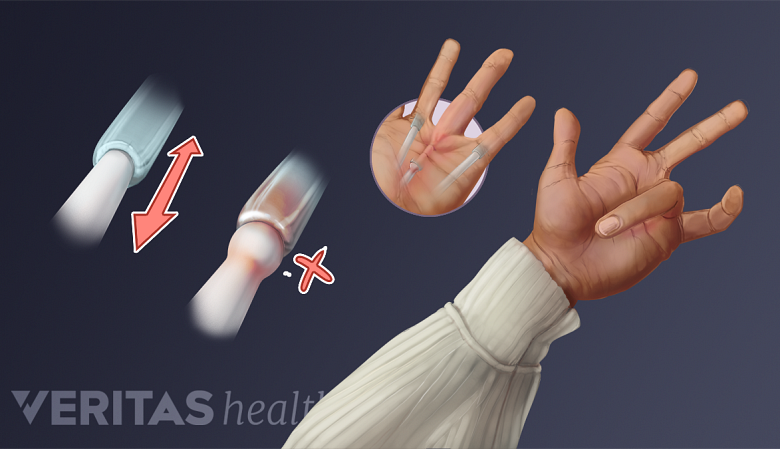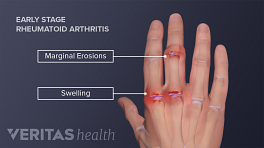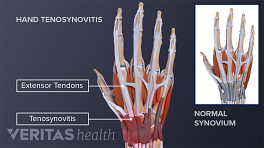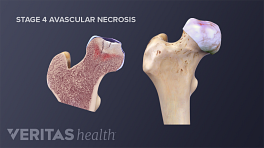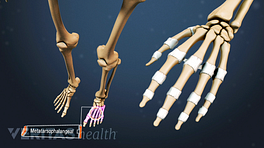Trigger finger can cause alarm for people when they first experience its symptoms—a finger or thumb that seems to be “stuck” in a bent position, until it snaps back suddenly into place.
Fortunately, trigger finger is a condition that is fairly straightforward to identify and treat.
In This Article:
- Trigger Finger (Stenosing Tenosynovitis)
- Nonsurgical Treatment for Trigger Finger
- Trigger Finger Release: Percutaneous and Open Surgery
Why Does Trigger Finger Occur?
Trigger finger develops when the sheath that encases the tendon in a finger or thumb becomes inflamed.
Trigger finger is the common name for a medical condition known as stenosing tenosynovitis. It most frequently occurs in middle age or older women.
Each finger and the thumb have flexor tendons that extend along the inside of the finger, from the base of the palm to the fingertip. These tendons give the fingers power to bend, curl, and grip objects. The tendons are protected and held in place by tendon sheaths, which encase sections of the tendon.
When these sheaths become inflamed, they can constrict the space available for the tendon to slide through them. Occasionally a small bump, or nodule, can also form, making the constriction even worse.
Signs of Trigger Finger
The most common sign of trigger finger is the temporary inability to straighten a finger or thumb. When it does release—sometimes by manually moving the finger—it will straighten with a painful snap.
The most commonly affected fingers are the ring finger, middle finger, or thumb. Multiple fingers may be affected. It can also affect both hands simultaneously.
Other signs of trigger finger include:
- A tender bump where the base of the finger meets the palm
- Swelling in the finger
- Symptoms that are worse in the morning
- Popping or clicking noise (known as crepitus) when the affected finger moves
- Gradual stiffness and loss of range of motion in a finger
Cases of trigger finger that do not involve the most common symptom of finger locking can occur, but they are rare.
Risk Factors for Trigger Finger
Trigger finger has no known cause, but factors that experts suspect may trigger it include repetitive or forceful hand movements, previous injury, or chronic inflammation.
There is also a type of trigger finger that can affect young children. Pediatric trigger finger, sometimes also known as congenital trigger finger, occurs in newborns and is a related but separate condition.
Some factors have been shown to raise the risk for trigger finger. These include:
- Being female—trigger finger may occur up to 6 times more frequently in women 1 Makkouk AH, Oetgen ME, Swigart CR, Dodds SD. Trigger finger: etiology, evaluation, and treatment. Curr Rev Musculoskelet Med. 2008;1(2):92-6.
- Being age 45 or older
- Having rheumatoid arthritis, gout, or diabetes
- Performing work or activities that involve repetitive gripping movement
Trigger finger can be diagnosed by a physician based on a detailed patient history and a physical exam. Imaging tests are typically not necessary to diagnose trigger finger.
- 1 Makkouk AH, Oetgen ME, Swigart CR, Dodds SD. Trigger finger: etiology, evaluation, and treatment. Curr Rev Musculoskelet Med. 2008;1(2):92-6.

